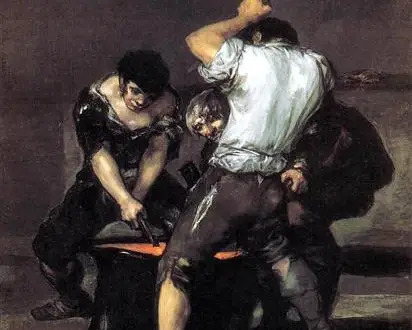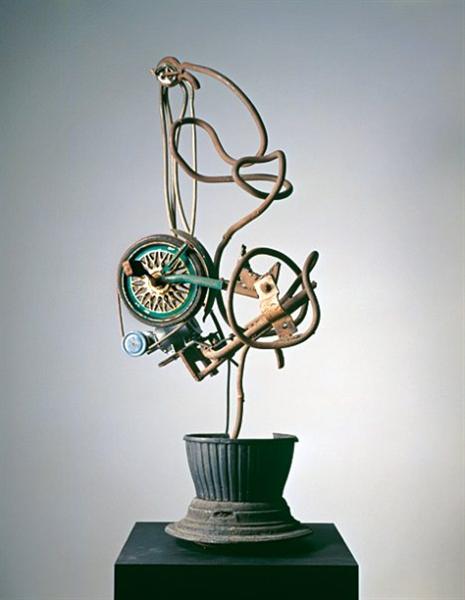Title of Artwork: “The Forge”

Artwork by Francisco Goya
Year Created 1810-1816
Summary of The Forge
Goya’s c. 1817 painting, The Forge, is currently housed in the Frick Collection in New York City and is one of his most famous works. According to art historian Fred Licht, Goya’s large oil on canvas depicting three blacksmiths working at an anvil is “undoubtedly the most complete statement of Goya’s late style.”
All About The Forge
The painting is an almost photographic depiction of a single moment, lacking any narrative. It’s a study in greys, blues, and black, with the blazing red of heated metal as a punctuation mark. The figures’ complementary gestures help to keep the composition in balance.
With thick, strong arms and masculine backs, the men of the Forge are rendered as classically heroic heroes. Despite this, their faces convey a roughness of demeanour, which is probably a ploy to make them stand out to the average person. As a literal allegory to the then-popular saying “on the anvil of history” it’s likely that the figures depict the working class of 19th-century Spain. A similar theme is explored by Goya in his 1808 painting, The Knife Grinder, which depicts the resistance of the French people to Napoleon’s invasion of Napoleonic France. Goya, despite being a court painter, was sensitive to the plight of the common man throughout his life. They were often depicted in their daily routines, with the dignity of work or the pain of war often highlighted.
A variety of interpretations have been put forth. A possible interpretation is that the old man in the painting is a nod to the myth of Vulcan’s Forge, in which the god was tricked by his young wife; if this is the case, then The Forge may be connected to two other paintings by Goya of the same scale: The Young Ones (Les Jeunes) and Time, both of which depict the inconstancy of women. There are no classical references to be found, but art historian Michael Fried sees “the strong pelvic thrust of the near worker depicted [from] behind in combination with fierce concentration of all workers on a red hot iron.”
A preparatory drawing, Three Men Digging, appears to have been used as a model for this painting, which is thought to have been done between 1815 and 1820, despite the fact that the two works are both uncertainly dated. Despite the fact that the positions of the figures in the drawing and the painting are similar, there are a number of differences. Two of the men’s faces are visible in The Forge, while only one is visible in the drawing. The action in the drawing involves digging a hole with farm implements, whereas the action in the painting is focused on an anvil. The lack of anecdotal context and the impractical proximity of the three men in both images suggest abstract rather than realistic visions.
Information Citations
En.wikipedia.org, https://en.wikipedia.org/.























